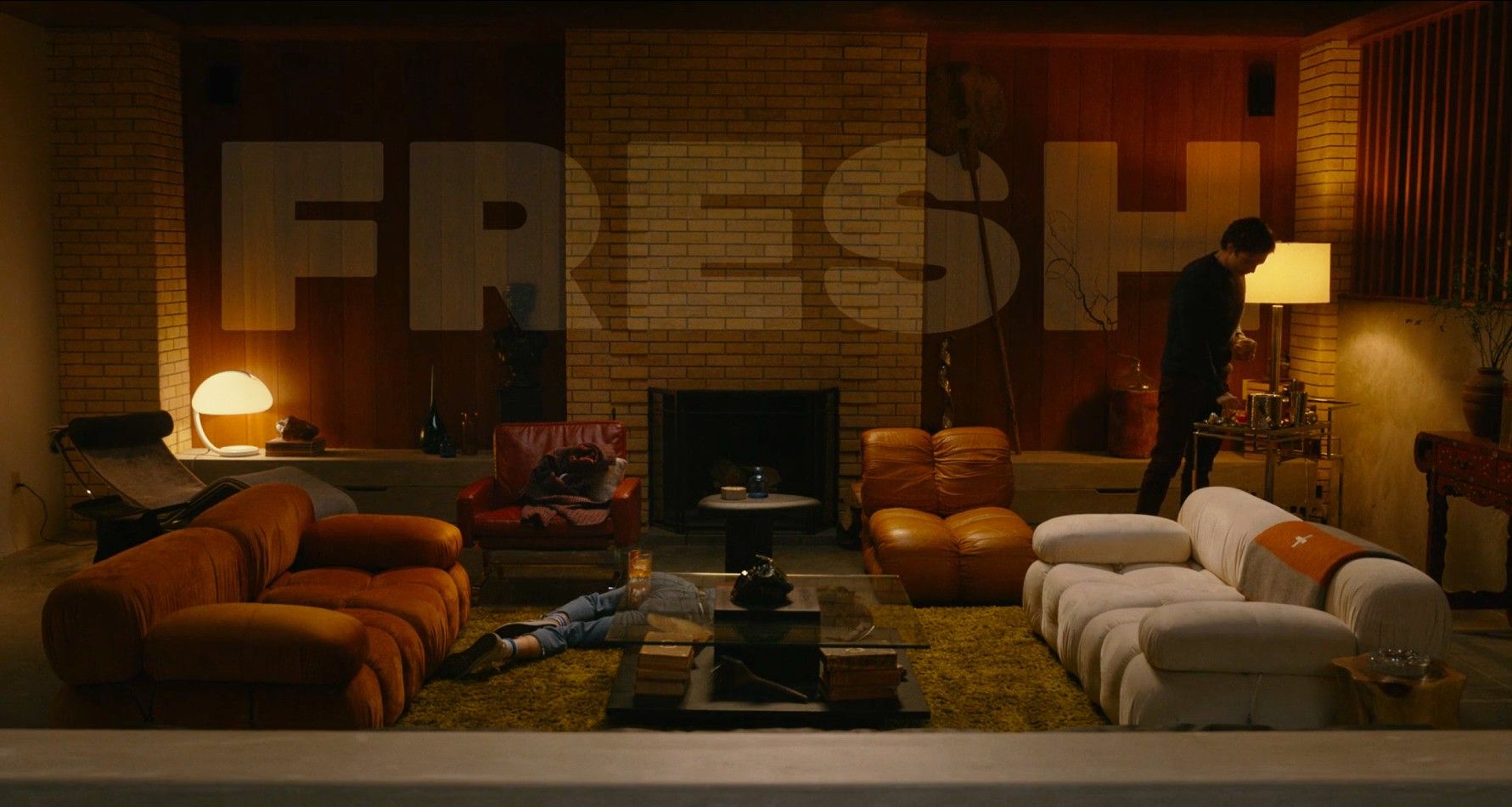The opening credits’ placement in Fresh makes its cannibalism twist more sick. Starring Daisy Edgar-Jones (Normal People) and Sebastian Stan (Pam & Tommy), Fresh could have been easily relegated to yet another horror movie with worn-out characters and plot. However, with the decision of first-time feature director Mimi Cave to cleverly delay its opening sequence, the film became more impactful.
Fresh starts out as a romantic comedy exploring Noa’s (Edgar-Jones) fatigue over online dating. She then meets charming doctor Steve (Stan) at a grocery store, and the two hit it off, even going on a road trip together immediately. As Fresh drops hints about Steve’s cannibalism, the movie evolves into something darker and more sinister. Moreover, aside from getting to know the true intentions of the male lead more, the viewers become more immersed in the film through its structural oddness.
The opening credits of Fresh begin at around 33:10, when Noa collapses after being drugged. It is punctuated by Steve’s confession that he is a cannibal who also preys on women to get their meat and earn huge profits. This title sequence then serves as the delineation between the contrasting halves of the movie: the romance has ended, and the dreadful part begins. This shift in genre serves as an invitation to breathe and buckle up for the remainder of Fresh, which has true-story inspirations. Though disorienting at first, by placing the “beginning” of the film at this point, the audience is then forced to realize that they will be witnessing something worse from here on out.

The first thirty minutes of Fresh establishes Steve as the perfect man for Noa — a contradiction of her previous experiences with modern dating. The couple’s playful chemistry, which plays a significant role in the plot, also lulls the viewers in. Since the movie does not employ dramatic irony, the audience sees the events unfold through the female lead’s eyes. They become involved firsthand with the relationship, enjoying the conversations and stay-at-home dates Noa and Steve share. The cannibalism twist consequently becomes shocking enough for both the spectators and Noa. This complication feels like a betrayal, especially after Steve has successfully played the role of a charmer.
Subverting the “Final Girl” horror movie trope, Fresh juxtaposes the dangers of online dating and the barbarity of cannibalism. By taking the somewhat universal experience of vulnerability towards love, Fresh then grounds itself to reality. It does not only explore the literal side of consuming human meat, but it also dissects the horrors women face on a daily basis and the friendships they need in order to quash gender stereotypes. In doing so, Fresh treats its audience as another character, blindsiding them with narrative twists and surprising them with opening credits delay.




